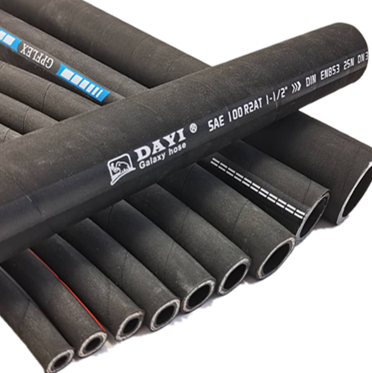335345435
Aug . 14, 2024 17:13 Back to list
Durable Yellow High Pressure Hydraulic Hose for Enhanced Performance and Reliability in Industrial Applications
Understanding Yellow High Pressure Hydraulic Hoses Applications and Benefits
In the world of industrial machinery and equipment, hydraulic systems play a critical role in ensuring operational efficiency and power transmission. One crucial component of these systems is the hydraulic hose, specifically the yellow high-pressure hydraulic hose. This particular type of hose is designed to withstand high pressures and harsh environmental conditions, making it a preferred choice for various applications across different industries.
What is a High Pressure Hydraulic Hose?
High-pressure hydraulic hoses are specialized tubes that transport hydraulic fluids under high pressure from one component to another within a hydraulic system. These hoses are made from layers of synthetic rubber, reinforcing textiles, and steel wire, allowing them to handle significant amounts of pressure without bursting or leaking. The yellow designation often indicates a specific type of covering for visibility and safety, ensuring that these hoses are easily identifiable in a cluttered work environment.
Applications of Yellow High Pressure Hydraulic Hoses
The versatility of high-pressure hydraulic hoses makes them applicable in a wide range of industries. Some of the most common applications include
1. Construction In construction sites, heavy machinery such as excavators, bulldozers, and cranes rely on hydraulic systems for effective operation. Yellow high-pressure hydraulic hoses are used to transmit hydraulic fluids, providing the necessary force to lift heavy loads, dig earth, and perform other vital tasks.
2. Agriculture Farming equipment uses hydraulic systems for various functions, including plowing, planting, and harvesting. High-pressure hydraulic hoses ensure that farmers can operate machinery efficiently, increasing productivity and improving crop yields.
3. Marine and Offshore In marine applications, hydraulic hoses are vital for operating winches, cranes, and steering mechanisms. The yellow high-pressure hoses are designed to resist the corrosive effects of saltwater, ensuring longevity and reliability in harsh marine environments.
yellow high pressure hydraulic hose

4. Automotive Many vehicles, particularly trucks and buses, utilize hydraulic systems for braking and steering. High-pressure hoses are essential for delivering the necessary force to operate these systems safely.
Benefits of Yellow High Pressure Hydraulic Hoses
1. Safety and Visibility The bright yellow color of these hoses enhances visibility on job sites, reducing the risk of accidents. Workers can easily identify hydraulic lines, minimizing the chances of inadvertently damaging them.
2. Durability Yellow high-pressure hydraulic hoses are crafted to endure extreme pressures and temperatures. They are resistant to abrasion, oil, and other chemicals, making them suitable for rigorous industrial environments.
3. Flexibility Despite their strength, these hoses offer remarkable flexibility, allowing them to bend and maneuver around machinery and equipment without compromising their integrity. This flexibility is crucial in tight spaces where rigid pipes would be impractical.
4. Performance High-pressure hydraulic hoses are engineered to maintain optimal performance under various conditions. Their ability to transmit hydraulic fluids efficiently means that machinery operates smoothly and effectively, leading to increased productivity.
5. Customizability Manufacturers often offer yellow high-pressure hydraulic hoses in various sizes, lengths, and specifications. This customization allows businesses to choose the perfect hose for their specific applications, ensuring maximum efficiency.
In conclusion, yellow high-pressure hydraulic hoses are integral to the functionality of many industrial systems. Their durability, safety features, and versatility make them essential in construction, agriculture, marine, and automotive applications. By understanding their benefits and applications, businesses can enhance their operations and ensure the safety of their workforce, ultimately leading to improved productivity and efficiency.
-
SAE 100 R17 Black Smooth Cover Hydraulic Hose
NewsMar.07,2025
-
SAE 100 R17 Black Smooth Cover Hydraulic Hose
NewsMar.07,2025
-
SAE 100 R17 Black Smooth Cover Hydraulic Hose
NewsMar.07,2025
-
SAE 100 R17 Black Smooth Cover Hydraulic Hose
NewsMar.07,2025
-
SAE 100 R17 Black Smooth Cover Hydraulic Hose
NewsMar.07,2025
-
steel wire braided hydraulic hose
NewsMar.07,2025



